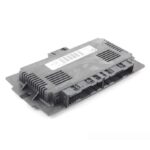The Allison 3000 Series transmission is a workhorse in the medium-duty truck industry. A key component for its proper function is the Allison Transmission Output Speed Sensor. This article will delve into the sensor’s location, purpose, and importance within the overall transmission system.
Allison 3000 Series: A Transmission Overview
The Allison 3000 Series transmission has been a mainstay in medium-duty trucks since 1993. Its prevalence makes understanding its components, particularly those crucial for diagnostics and repair, essential for mechanics and truck owners alike. This overview will utilize illustrations to pinpoint key components, culminating in a detailed examination of the output speed sensor.
Key Components and Their Functions
The Allison 3000 features several vital components working in concert:
-
Torque Converter: Located at the front of the transmission, the torque converter is a fluid coupling enabling smooth starts and transitions to higher speeds. It incorporates a lockup clutch for efficient power transfer.
-
Engine Speed Sensor: Positioned on the lower passenger side, this sensor monitors crankshaft speed and relays this critical data to the transmission control module for precise shifting and performance.
-
PTO (Power Take-Off): Accessible from both sides of the transmission, the PTO provides power for auxiliary equipment like hydraulic pumps or winches.
-
20-Way Connector: This crucial electrical connector, situated near the dipstick hole, acts as the communication hub between the transmission control module and various sensors and solenoids.
-
Transmission Control Module: Located on the underside, this module is the transmission’s brain, processing data from sensors and controlling shifting operations. It relies heavily on accurate input from sensors like the output speed sensor.
-
Filters: The Allison 3000 uses a main filter and a lube filter to maintain fluid cleanliness and ensure optimal performance.
Focus: The Allison Transmission Output Speed Sensor
The Allison transmission output speed sensor plays a critical role in monitoring the output shaft’s rotational speed. This information is fed to the transmission control module (TCM), allowing it to:
- Determine Shift Points: Accurate output speed data is essential for the TCM to execute smooth and timely shifts.
- Monitor Performance: The sensor helps the TCM detect slippage or other performance issues within the transmission.
- Diagnose Problems: A malfunctioning output speed sensor can trigger diagnostic trouble codes (DTCs), aiding in troubleshooting.
Location and Identification
The output speed sensor is typically located at the lower rear of the transmission, behind the 20-way connector on the passenger side. Its precise position can vary slightly depending on the specific model year and configuration. Consulting a service manual for your specific Allison 3000 is recommended.
Importance of a Functioning Output Speed Sensor
A faulty output speed sensor can lead to a variety of problems, including:
- Erratic Shifting: Inaccurate speed readings can cause the transmission to shift harshly, hunt for gears, or shift at inappropriate times.
- Limp Mode: The TCM may enter a “limp mode” to protect the transmission, limiting speed and functionality.
- Check Engine Light: A malfunctioning sensor will often trigger the check engine light, alerting the driver to a potential problem.
Conclusion
The Allison transmission output speed sensor is a vital component for proper transmission function. Understanding its location, purpose, and the potential consequences of its failure is crucial for maintaining the performance and reliability of your Allison 3000 Series transmission. Regular maintenance and prompt diagnosis of any sensor-related issues are recommended to prevent costly repairs and downtime.

